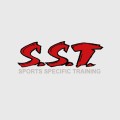Is it Safe to Take Supplements? Will I Test Positive?
You have been living under a rock if you have not heard of the recent drug scandals that have been flooding professional and amateur sports. From Lance Armstrong, to Peyton Manning it seems as though no professional athlete is safe from the allegations. Performance enhancing drugs in sport are very real and athletes at any level may be exposed to the temptations.
What’s even scarier is that many athletes will utilize supplements or medications to help them increase their performance thinking that these substances are safe because they are “natural”. It’s no secret that the supplement industry has grown large by marketing an increased number of muscle building, fat burning, and substances that will do just about anything. Marketing strategies include using terms like “natural” to persuade more consumers to buy their product. The average gym goer is looking for anything that will give them a boost and rarely cares about the ramifications of taking a supplement that may be laced with a banned substance. Unfortunately for us, it is the consumer’s responsibility to know if the supplements we are using are safe.
For athletes especially, this responsibility is not a choice! Athletes must take responsibility for every single thing that they ingest. Many sporting organizations are now testing for banned substances on a regular basis. It is not acceptable to claim ignorance or deny the allegations by claiming that you were only taking health supplements.
So how does an athlete stay safe from performance enhancing drugs?
The CIS (Canadian Interuniversity Sports) recommends that athletes take responsibility for everything that they put into their body. Since every CIS athlete is eligible for drug testing both in and out of season, athletes are to be responsible and informed year round. Athletes should reference all supplements with the Global Drug Reference Online (DRO).
Luckily there are some organizations that make it their mission to test supplements for banned substances so that athletes are not left in a bad spot if they choose to use their products. At SST, we believe that supplements can offer benefits in performance and recovery for athletes; however these supplements need to be guaranteed safe so there is no worry of testing positive. We also work to supply products that are banned substance free, so that our clients need not worry.
When choosing supplements, athletes should look for the “Informed Choice” or “NSF Certified” logos. These 2 organizations have made it their mission to rigorously test supplements to ensure they are banned substance free. For more information on the Informed Choice or NSF process you can visit their websites HERE and HERE.
Please choose wisely and be informed when choosing nutritional supplements. Testing positive is not worth it.






















